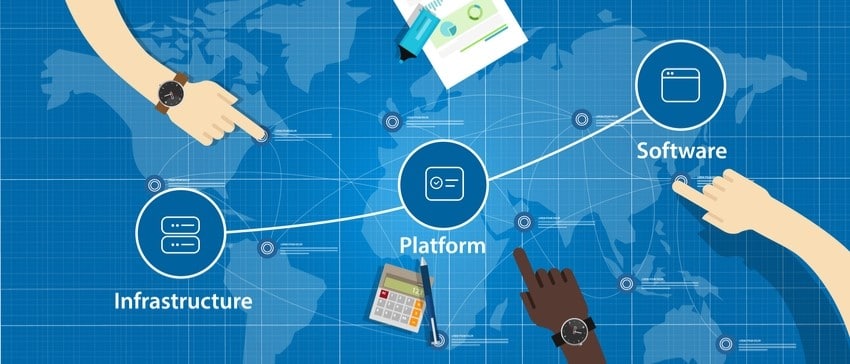Estimated reading time: 5 minutes
• The procurement function helps organizations acquire or obtain the products (and services) needed for discrete purposes: sales, marketing, product design, distribution, or even brand positioning.
• So, given that the procurement function focuses exclusively on sourcing and acquiring products, project procurement relates to obtaining the material products or supplies for a larger project: a construction project, for instance!
Project procurement management is not only procuring products and services but the practice of effectively managing the relationships and activities that go into procuring products and services for a project. When project managers embark on complex projects, they view procurement as strategic, cross-cutting tasks that can improve or impede product outcomes.
Project procurement management entails the steps and practices required to make a project’s procurement management process a success.
Existing evidence shows project procurement management entails these four steps:
Four Steps of Project Procurement Management
1. Plan procurements
The first step of successful procurement management is making a clear plan of the materials and products needed for a service. The plan procurement plans for the following:
- Materials and services for the project
- What is readily available in the company and what should be obtained from suppliers
- Control requirements for different suppliers
- Required delivery dates
- Do you want a flat-rate or fixed-rate contract or a reimbursable one?
- Legal terms and conditions
- Key milestones
- Preferred suppliers
- Contract management
- Supplier selection processes
During the planning stage, it’s important to consider steps of action in case a contract is given, but the supplier fails to meet the requirements.
So, the project procurement management takes remediation into the plan, ensuring the existence of countermeasures and emergency response plans in contract management and negotiation processes.
2. Conduct procurements
The other step of project procurement management is to conduct procurements. The conduct procurement step details the execution phase of any project procurement management.
In this step of the project procurement management, bids are gathered, contracts are submitted, and vendor negotiation and discussions take place. Conduct procurement also captures the actual sending of RFPs and receipt of payments.
3. Control or administer procurement
This step is focused on controlling project requirements to ensure different deliverables are met. In project management, project deliverables must be met within specified timeframes.
This implies that administration and control protocols must be in place. Similarly, project procurement management contains administration protocols.
The two steps involved in control procurement include:
- Progress and status updates from different suppliers
- Quality checks of delivered products and services
Cost monitoring is also part of control procurement. Changes and their impact on the project lifecycle are discussed and evaluated in this step. This stage also answers the most pertinent question: if a resource input is late, how will it affect the project schedule?
4. Close procurements
The close procurements detail the steps and activities that go into closing a project. In procurement, bonding and insurance are considered critical closing steps of any successful project.
Insurance and bonding ensure no alterations or outstanding changes relating to the completion of the contract. All parties are drawn to a legally-binding agreement, ensuring that both parties benefit from the contract.
So, a critical part of project procurement management is handling close procurement processes. These processes have a legal dimension and involve obtaining insurance for project liabilities emanating from contractors.
For instance, a supplier can contract a cement manufacturing company to deliver cement to a project manager. Unfortunately, the cement delivered to the supplier can be of low grade or expired, leading to structural failures on the part of the project manager.
In this case, the project manager must liaise with the supplier to ensure that s/he receives compensation accordingly. The project manager must foster a culture of contract negotiation to ensure they get the best from suppliers.
This role is part and parcel of close procurements.
The Role of a Project Manager in Project Procurement Management
In project procurement management, project managers must steer the end-to-end process of initiating and closing a project. And unless they’re working for small organizations, project managers have procurement teams alongside them.
The details of project management and procurement management depend purely on procurement roles present and organizations themselves. But some companies have procurement managers who work alongside project managers to handle procurement processes.
And in other cases, the procurement team may only be responsible for financial and transactional processes, including sending RFPs, RFQs, and RFIs, filing cheques, and receiving invoices.
So, regardless of procurement management, here are some roles and responsibilities of a project manager.
- Planning. The project manager handles the planning and foundational bit of projects. Project managers identify project deliverables, personnel responsible for meeting these deliverables, design workflows, and provide timeframes. At this stage, project managers liaise with procurement managers to identify budgetary limits, expenditures, and the project’s financial standing.
- Procurement. The project manager controls the associated costs, expenses, and sourcing processes of a project, especially when the procurement officials are missing or where the organization is lean to have a procurement team. While project managers may not sometimes conduct procurement themselves, they’re responsible for ensuring that procurement functions are done correctly.
- Conflict resolution. Project managers will handle conflicts emanating from interpersonal and team dynamics. Project managers ensure a smooth workflow by building and reinforcing strong work relationships. It’s the role of project managers to ensure that different teams liaise to meet project deliverables within set timeframes.
- Performance evaluation. Project managers evaluate performance at every turn. The project manager looks at procurement teams and provides a performance evaluation of the procurement process.
In cases where procurement teams are missing, project managers will handle the procurement process and submit a performance evaluation report on behalf of procurement heads.
ProcurePort – Streamlining Project Procurement Management Functions
The emergence of procurement software has helped streamline sourcing and procurement processes. Project managers can now access easy-to-use, automated procurement solutions to order products, make payments, and manage contract negotiation processes.
Project managers can rely on the best-of-breed tech solution for different procurement management needs. Project managers don’t have to remember product categories when handling category management. The software automates category management in complex project undertakings, allowing project managers to focus on the bottom line.
Contact ProcurePort for project procurement management solutions.










